We don’t see as many movies about divorce as we used to. Back in the early ’80s, when divorce was common, we had everything from brutal dramas about the dissolution of families to comedies about newly single dads and even a movie in which Drew Barrymore plays a little girl filing for divorce from both her parents. That’s one reason why Noah Baumbach‘s Marriage Story stands out this year, in addition to it genuinely being one of the best movies of 2019, streaming or otherwise.
With the divorce drama now streaming exclusively on Netflix, millions of people are watching Marriage Story and choosing sides and hoping for awards for its cast and crew. When you’re done debating whether it’s balanced or biased and you can take a break from discussing Laura Dern’s God speech and how you wish Wallace Shawn had shouted “irreconcilable!” in Vizzini fashion, I have a number of recommendations for what to see next, including some that inspired Baumbach.
The Disappearance of Eleanor Rigby (2013-2014)
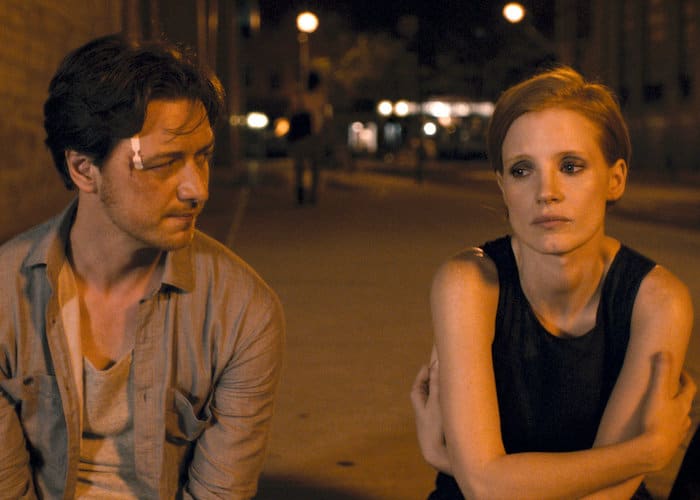
Before they were all in IT: Chapter Two together, Jessica Chastain, James McAvoy, Bill Hader, and Jess Weixler starred together in this project told three different ways. There’s The Disappearance of Eleanor Rigby: Her (2013), The Disappearance of Eleanor Rigby: Him (2013), and the linear, consolidated version, The Disappearance of Eleanor Rigby: Them (2014). They offer his and her perspectives on a marriage story that eventually becomes a separation story, about a New York couple (Chastain and McAvoy). Still, the title and the fact that the films are all by one male filmmaker would, like Marriage Story, suggest a leaning toward the Him side even in the Her version.
Writer/director Ned Benson isn’t the first person to show a relationship from two perspectives. There was also the 1991 rom-com He Said, She Said, which was even directed by a man and woman separately for their respective gendered point of view (Ken Kwapis and Marisa Silver). Marriage Story fits with these movies even without having to pull the multi-perspectival structure gimmick. It’s all definitely from his perspective since it’s made by Baumbach, but there’s still a layered sense of both POVs with viewers seeing more of one or the other based on their own perspective. The same could be true with the Them cut of The Disappearance of Eleanor Rigby, which seems to be the only version available.
Stream The Disappearance of Eleanor Rigby: Them free with ads on Vudu
Split (2013)

Given the rarity of documentaries about love, it’s not that surprising there have been so few documentaries about divorce. Many of those that do exist are foreign films dealing with special laws in other countries, as in the cases of Divorce Iranian Style (1998) and Erasing Dad (2014), the latter of which relates to parts of Charlie’s situation in Marriage Story. I could endorse the American feature Divorce Corp (2014), which deals with the business of family law with a focus on divorce and custody cases. But I’m going with something shorter, the 25-minute mostly animated doc Split, which presents the kids’ side of divorce with perspectives that are sad, funny, sweet, and innocently insightful.
The Squid and the Whale (2005)
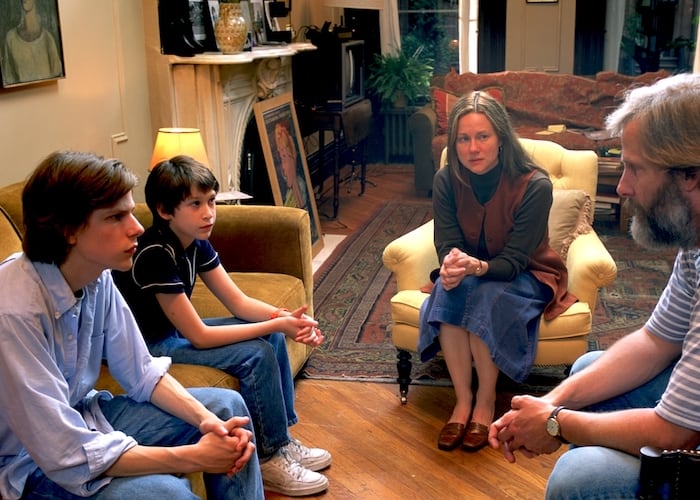
Before Baumbach made a Netflix Original loosely based on his own divorce from Jennifer Jason Leigh, he broke out into the big time with this indie drama loosely based on his parents’ divorce and how it affected him. Set in Park Slope, Brooklyn, in 1986, the movie stars a young Jesse Eisenberg as the filmmaker’s avatar with Jeff Daniels and Laura Dern playing intellectual characters inspired by his own father and mother, both of whom were similarly writers. Interestingly enough, The Squid and the Whale, for which Baumbach received his first and only Oscar nomination, for its screenplay, was released around the time of his marriage to Leigh. Owen Kline, son of Leigh’s best friend, Phoebe Cates, plays Eisenberg’s character’s creepy little brother.
Baumbach has acknowledged the connection between his two divorce movies, too. In an interview with Emanuel Levy, he says: “In a strange and challenging way, I also reflected back on my own work with The Squid and the Whale, examining the ways in which divorce is both different and similar from the points of view of children and adults.”
Stream The Squid and the Whale on Amazon Prime Video
Lost in Translation (2003)

Scarlett Johansson appears to be the go-to for movies by filmmakers working out their marriage and/or divorce artistically. Lost in Translation is writer/director Sofia Coppola’s loose look at her relationship with Spike Jonze, whom she divorced the year of its release. Ten years later, Johansson also played one of the main characters, albeit vocally, as the AI in Jonze’s sci-fi comedy Her, which many see as a response to Lost in Translation. This was also the first movie to put Johansson on the map as a respectable actor, earning her one of two simultaneous first Golden Globe nominations for her performance as a young woman wandering Tokyo while her husband is working there. Now she’s finally set to receive her first Oscar nomination for Marriage Story. Next, she needs to star in a film about divorce from Jennifer Jason Leigh.
Stream Lost in Translation via Starz
The Anniversary Party (2001)
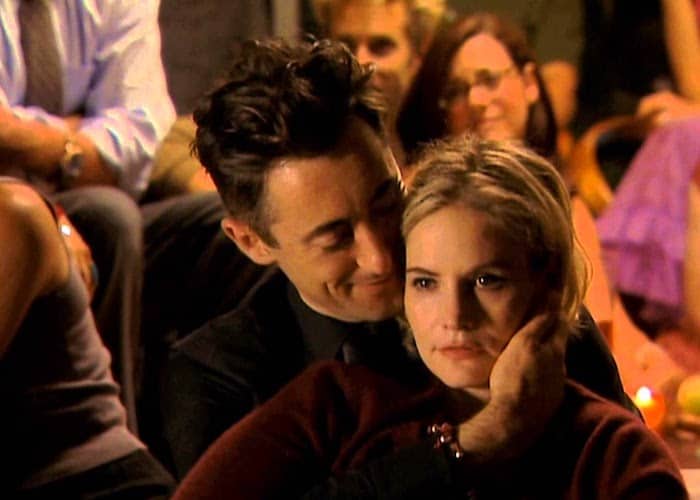
Baumbach is known as the writer and director in the family, but Jennifer Jason Leigh has dipped into that arena. She even co-wrote Greenberg (2010) with her then-husband, and that’s another interesting Baumbach work involving the distinction between New York people and LA people. And it’s the movie that broke up Baumbach and Leigh with his affair with leading lady Greta Gerwig. Anyway, before that, Leigh co-wrote and co-directed The Anniversary Party, surprisingly her only directorial credit. Her partner in creating the film, Alan Cumming, also co-stars alongside her as a married Hollywood couple reconciling after a separation and hosting the eponymous gettogether. Owen Kline is also in this, along with his real-life sister (now known as Frankie Cosmos) and parents (Cates and Kevin Kline). The Anniversary Party was released the year that Leigh and Baumbach first met.
Stream The Anniversary Party free with ads on Vudu
The War of the Roses (1989)
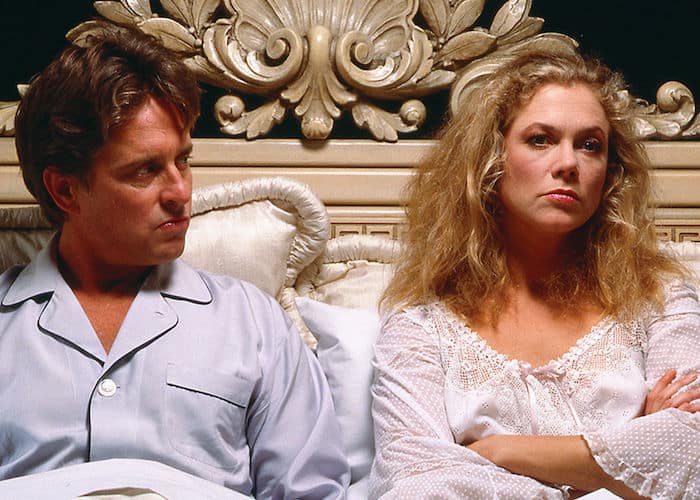
Of all the great divorce movies why am I recommending The War of the Roses rather than, say, Kramer vs. Kramer (1979), which he told Emanuel Levy is “an absolute influence,” or Shoot the Moon (1982)? (By the way, Husbands and Wives is great and relevant in numerous ways, but I have to pass on endorsing it at this time.) Well, aside from this being an underrated gem and appreciably another reunion of the phenomenal Romancing the Stone trio of Kathleen Turner, Michael Douglas, and Danny DeVito, and their unrivaled chemistry, it’s also directed by DeVito. And since I recommended his movie Hoffa to watch after The Irishman, why not another DeVito movie to watch after another one of Netflix’s big awards contenders of 2019?
Rent or buy The War of the Roses from Amazon
Fast Times at Ridgemont High (1982)
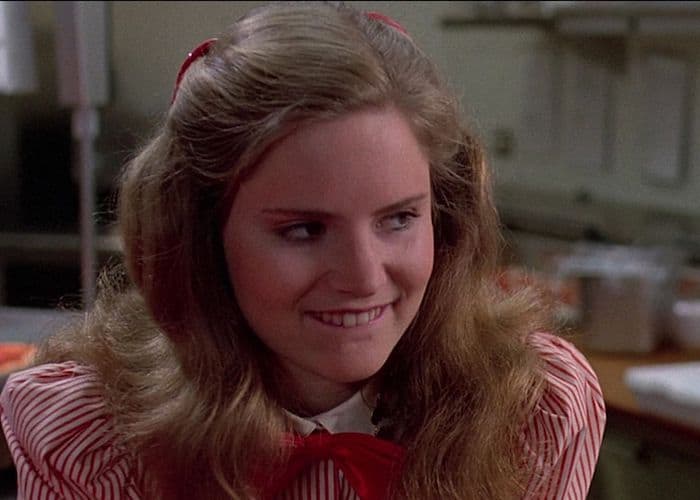
Johansson’s character, Nicole, is an actress who, despite her acclaimed work on the stage, is best known to the masses for her breakout role baring her breasts in a teen movie. That’s a nod — and sort of a cheap one considering Jennifer Jason Leigh’s film career — to Leigh’s breakout role, with nudity, in Fast Times at Ridgemont High. The Amy Heckerling-helmed, Cameron Crowe-scripted teen movie is also so much more than its nudity (though a lot of its legacy is in fact in Leigh’s BFF Cates’ nude scene), and Leigh’s performance is terrific throughout. If you thought of this movie to get the reference, you owe it to yourself and the actress to watch it again in order to wash out the dominance of that association.
Stream Fast Times at Ridgemont High on Starz
Persona (1966) and Scenes from a Marriage (1973-1974)

Finally, here are the only two titles that Baumbach likely cares about, for this list or otherwise. From the beginning, Ingmar Bergman‘s Scenes from a Marriage, which was originally a miniseries and then a shortened film version, looked like the obvious precursor to and influence on Marriage Story. The plot is similarly a tale of marriage and divorce. There’s a magazine article with the same title featured prominently. And the poster for Marriage Story with Johansson, Driver, and little Azhy Robertson in bed looks like it was taken by Sven Nykvist.
Yet the Bergman that Bauchman has actually been citing as an official influence on Marriage Story is the less palpable Persona. “I knew I wanted a lot of closeups in this movie,” Baumbach told IndieWire. “It’s a movie where you often have two people in a space together, and I loved how [Bergman] would frame those actresses.” To Awards Daily: “I loved the use of closeups in that movie. I loved how they are used to individuate but also connect the two characters.”
And to Emanuel Levy, he said cinematographer Robbie Ryan and he watched it: “because of the portraiture in that film, and the amazing ways he frames those two characters. There’s a keen sense of people’s physical relationships to each other in a room, and then also their individual relationships to their environment. I knew that close-ups would be very important for our movie. Scarlett and/or Adam are in every scene, and they both have such beautiful, expressive faces. We shot in a 1.66:1 aspect ratio because it frames the face really beautifully.”
And then again to IndieWire via the Filmmaker Toolkit podcast talking about the portraiture in Persona:
“I think the most amazing filming of faces, and not just close-ups, even faces in relationship to each other. The sort of stacking of bodies and people in space. People in their rooms. How do two people in a room sit together? That’s already an interesting thing. And something Bergman was so brilliant at. Not only how does the camera shoot them but how are the actors in relation to each other. The movie’s all about two versions of the same person. There’s so many ways to read that movie. I don’t even know that I know still what that movie’s about. It’s a movie I watch all the time, and I find something new… and it’s constantly elusive in the best way. It’s near as perfect a movie as is possible. But there’s also great wides in that movie, as well…[it’s] a great location movie. That was another element. And, of course, location is a big part of ‘Marriage Story’ with New York and Los Angeles.”
Stream Persona on The Criterion Channel
Stream Scenes from a Marriage television version on The Criterion Channel
Stream Scenes from a Marriage theatrical version on The Criterion Channel
Le Grande Illusion (1937) and Dr. Strangelove or: How I Learned to Stop Worrying and Love the Bomb (1964)
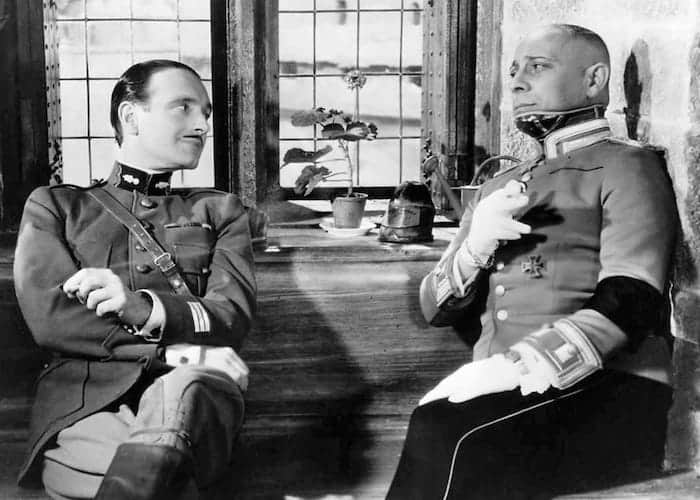
Baumbach cites two very different kinds of war movies as further influences in the Emanuel Levy interview. Here’s one: “I was thinking of the scene at the beginning of The Grand Illusion, Jean Renoir’s great movie about World War I. The French crash in German territory, and the Germans invite them to lunch. That civilized aspect of war is what divorce can feel like. You spend the day in mediation or a courtroom, slinging insults at each other through your proxies, and then you go home and discuss your child’s homework.”
And the other: “We looked at Dr. Strangelove, another movie that has people in official rooms, behind tables. The seemingly ordinary quality of these spaces can create a sense of menace as well, which Robbie and I accentuated by shooting them often in lower, wider angles. A joke in the movie is that people keep referring to ‘the space’ in Los Angeles, and yet the characters spend most of their time indoors, sometimes without windows. Which is why the movie ends in a big open shot — finally, the space is there.”
Twentieth Century (1934) and To Be or Not To Be (1942)
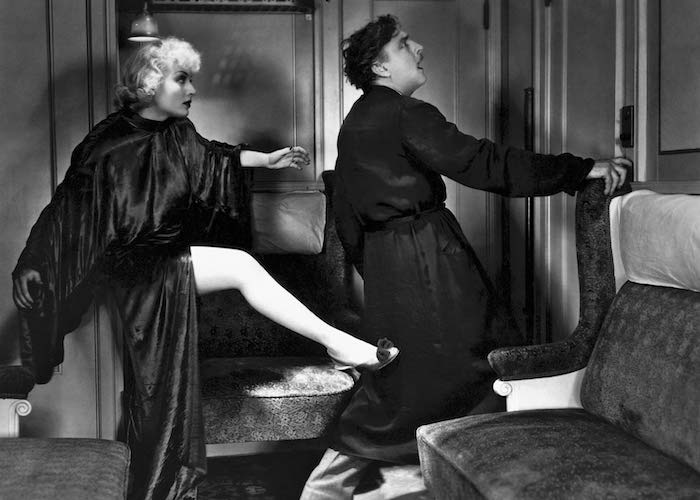
Apologies for disrupting the chronology this week, but these two titles go together, just like the last two. Baumbach considers Marriage Story to be a mix of many genres (he’s also cited North by Northwest when discussing it being part thriller). Twentieth Century and To Be or Not To Be are linked to the screwball comedy part of Marriage Story with the dynamic between the main characters. As he told Emanuel Levy:
“I wanted the audience to understand why this family is great, why Charlie and Sandra always hit it off, why he gets such a kick out of her. I approached those scenes almost like we were shooting a screwball comedy. Robbie and I looked at Ernst Lubitsch’s ‘To Be or Not to Be’ and Howard Hawks’ ‘Twentieth Century,’ both of which portray actors and couples. I love scenes with complicated choreography, overlapping dialogue…Could this be integrated in a movie that’s essentially realistic? There’s some of it in ‘Meyerowitz,’ too–lots of people running after one another. In ‘Marriage Story,’ it helps that they’re showbusiness people because it gives the theatricality context in a funny way.”
As Baumbach told IndieWire of the influence of these showbiz-set classics: “Both of those movies have performers who are in personal relationships in and out of their work. What helped with this family is that because they’re show-people, the theatricality of it all feels organic to them. This gave me a real opportunity in what would otherwise be considered a naturalistic movie.”
Rent or buy Twentieth Century from Amazon
Stream To Be or Not To Be on The Criterion Channel
Bonus: Company (1970)
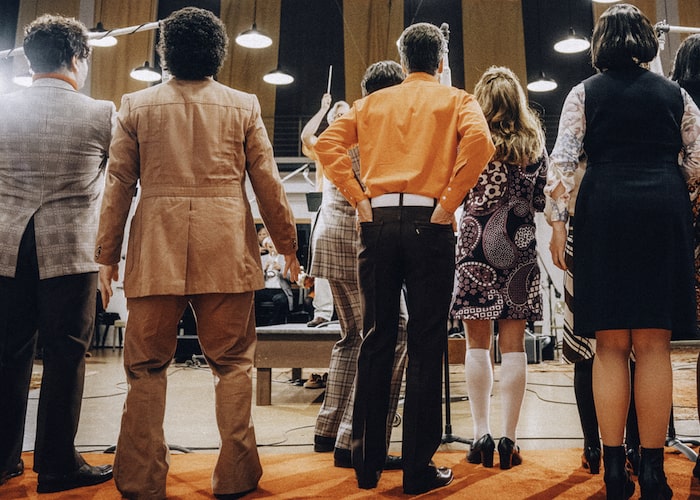
Allyson Riggs/IFC
If you’re unfamiliar with the songs performed separately by Adam Driver as Charlie (“Being Alive”) and Scarlett Johansson, Julie Hagerty, and Merritt Weaver as Nicole, Sandra, and Cassie (“You Could Drive a Person Crazy”), then you need to see the Stephen Sondheim and George Furth musical Company. There’s a revival heading to Broadway early next year if you’re able to catch it. Otherwise, well, there’s never been a movie adaptation of the show.
The best option to enjoy at least the songs, outside of any taped recordings of a stage production, is through DA Pennebaker’s 1970 documentary Original Cast Album: Company. Unfortunately, it’s mostly officially unavailable. The only copies of the DVD available on Amazon go for at least close to a hundred dollars and even the Pennebaker Hegedus Films website links to that as being the way to see it. Between Marriage Story and a recent parody of the doc from the series Documentary Now!, it’s about time for the film to be made available. And someone, maybe Rian Johnson since he loves the doc, needs to finally adapt the musical for the screen.
The post Watch ‘Marriage Story,’ Then Watch These Movies appeared first on Film School Rejects.
0 comments:
Post a Comment